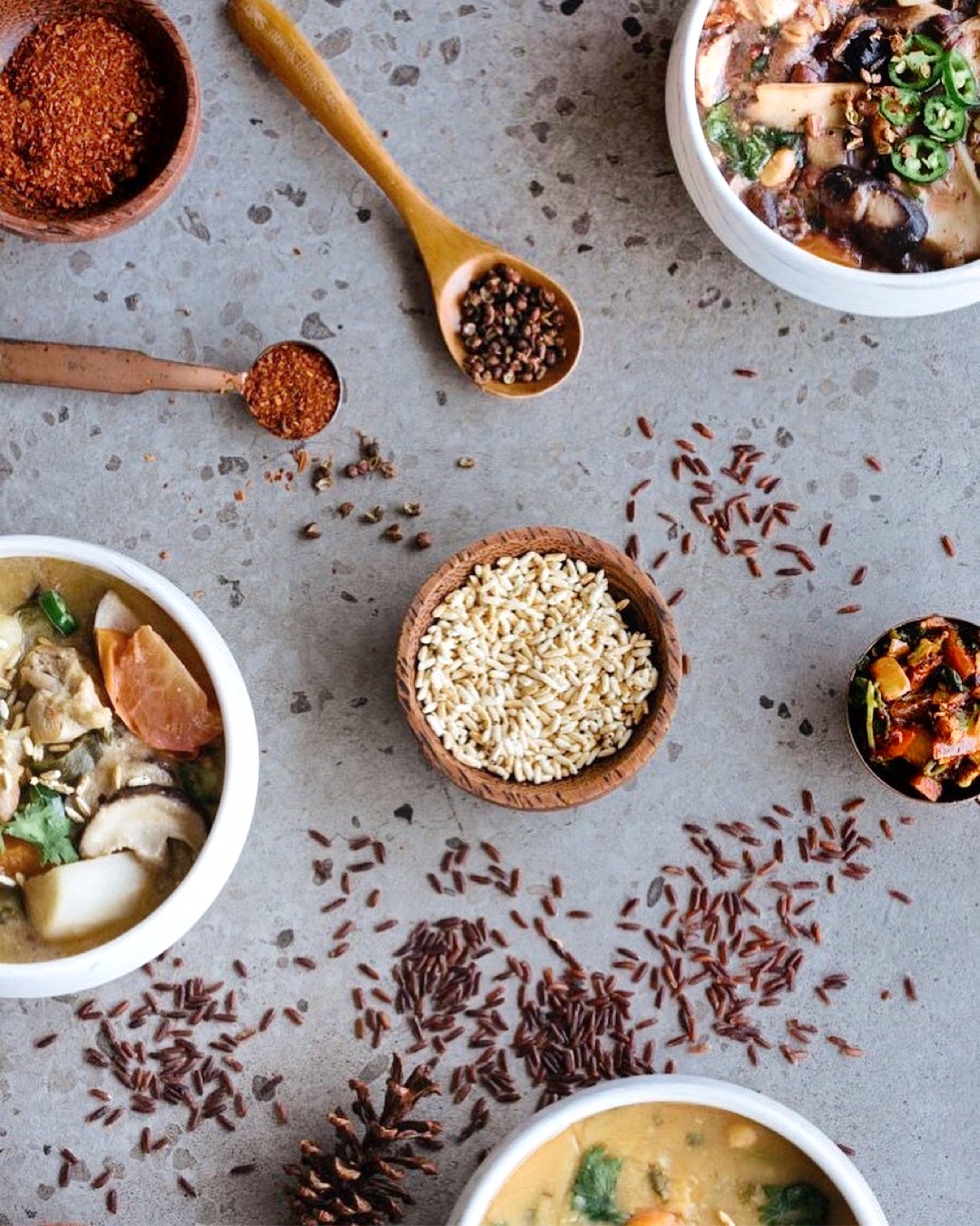
Did you know that for many of Druk Asia’s travellers, Bhutan is the home they can’t help but keep returning to time and again – such as the founders of Singapore’s very own The Soup Spoon? They visited Bhutan for the first time in February 2014, and again the next year. Each time, the foodie-loving couple never failed to find inspirations for new soups based on Bhutanese cooking style and ingredients.
2019 marks Anna and Andrew’s – founders of Soup Spoon – third trip to the Land of the Thunder Dragon, each journey always a smorgasbord of native food – and of course the inspiration for the latest series of Bhutan-inspired SouperChef Soup Specials.
Find out about the easiest Bhutanese dish you can make yourself, why Bumthang will excite your tastebuds, and Anna’s stash of instant noodles she brought to Bhutan!
1. One of your soups is interestingly named ‘Picnic Curry’. How did that come about?
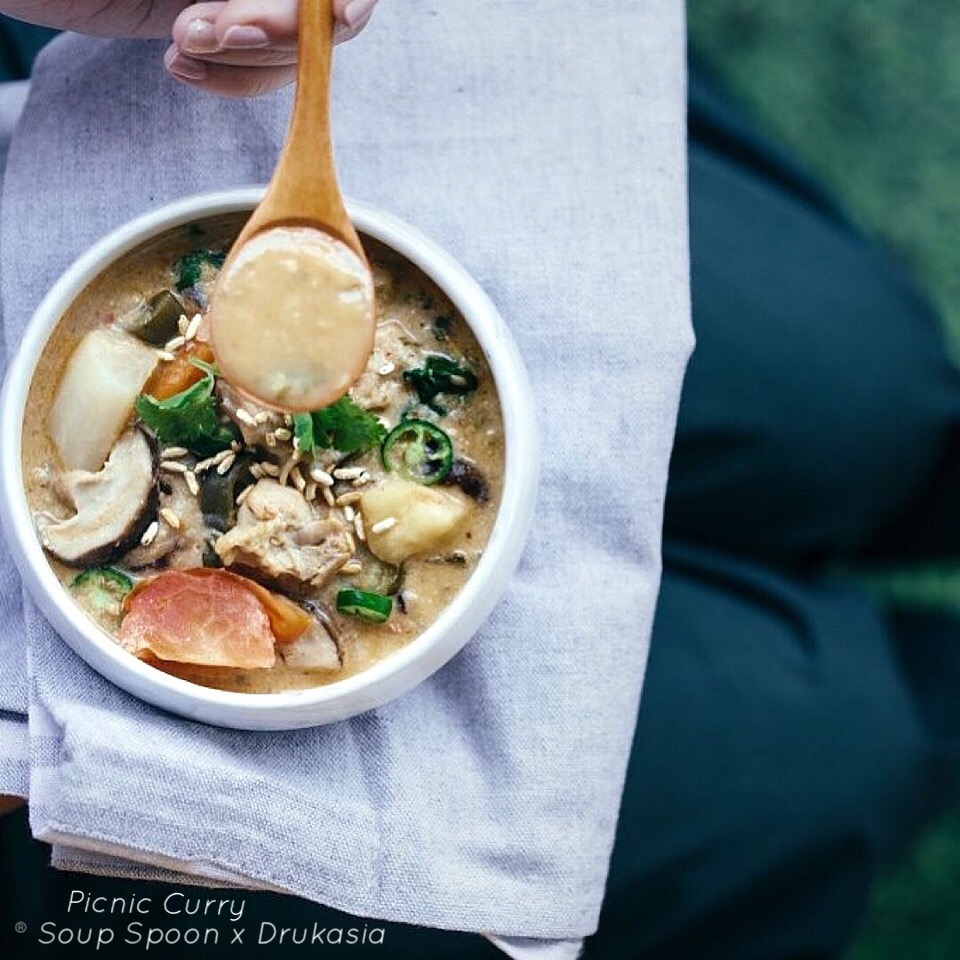
Chilli cheese is a very common dish at meal times, and so are chicken dishes. These were what we ate on our first two days after visiting festivals, prepared by our Druk Asia guide Mrs TP and we thought “what if we did a vegetarian version of this entire picnic?” And hence, the ‘Picnic Curry’ named in honour of her.
2. How do you capture the balance between keeping the essence of a Bhutanese dish with local palates?
I always tell people what we do won’t be exactly what you eat in that country, because it’s based on my interpretation and what I was taught, then infused with what I think Singaporeans will enjoy. We always still keep to some of the basics of the dish. For instance, ema datshi (chilli cheese). When I first made it, everyone told me it was so spicy – and that’s with Singaporeans who love their spice! So I reduced it by 20%, and that’s what you’re eating in stores now. We want people to enjoy it as a stew, and to be able to finish the entire bowl, so, I balanced the proportion of chilli and cheese by adding more vegetables, making it smoother.
3. What are some of the key Bhutan-sourced ingredients you used most for your six soups?
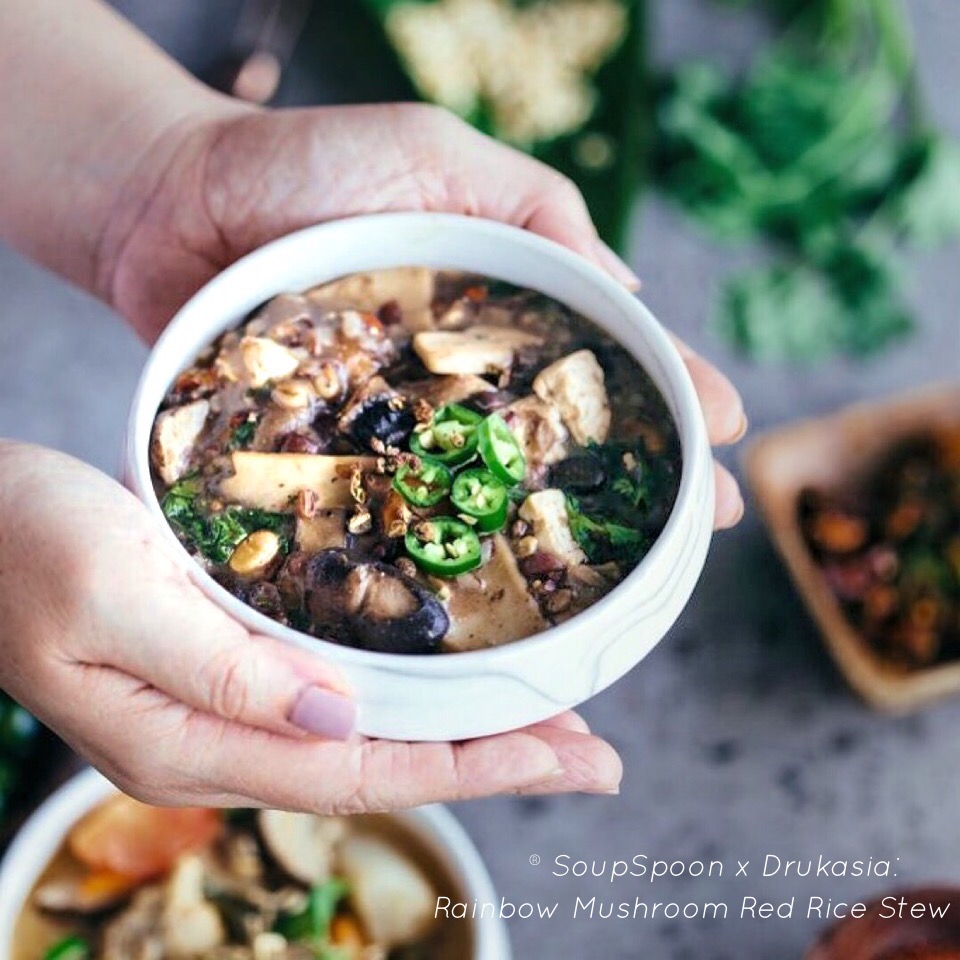
Thingay – Sichuan peppers – which I used as one of the condiments for Rainbow Mushroom Red Rice Stew, and in the cooking of Bhutanese radish stew. Red rice is another staple I use. Because everything in Bhutan is mostly organic, quality is something we don’t doubt. When we cook Bhutanese red rice, it’s very easy to cook. With a measurement of one cup of rice to two cups water, it’ll be good as a porridge-like stew or a soup base [like we did].
4. You’ve spoken so much about your guide, Mrs TP. What were your favourite key lessons or takeaways on cooking you learnt from her?
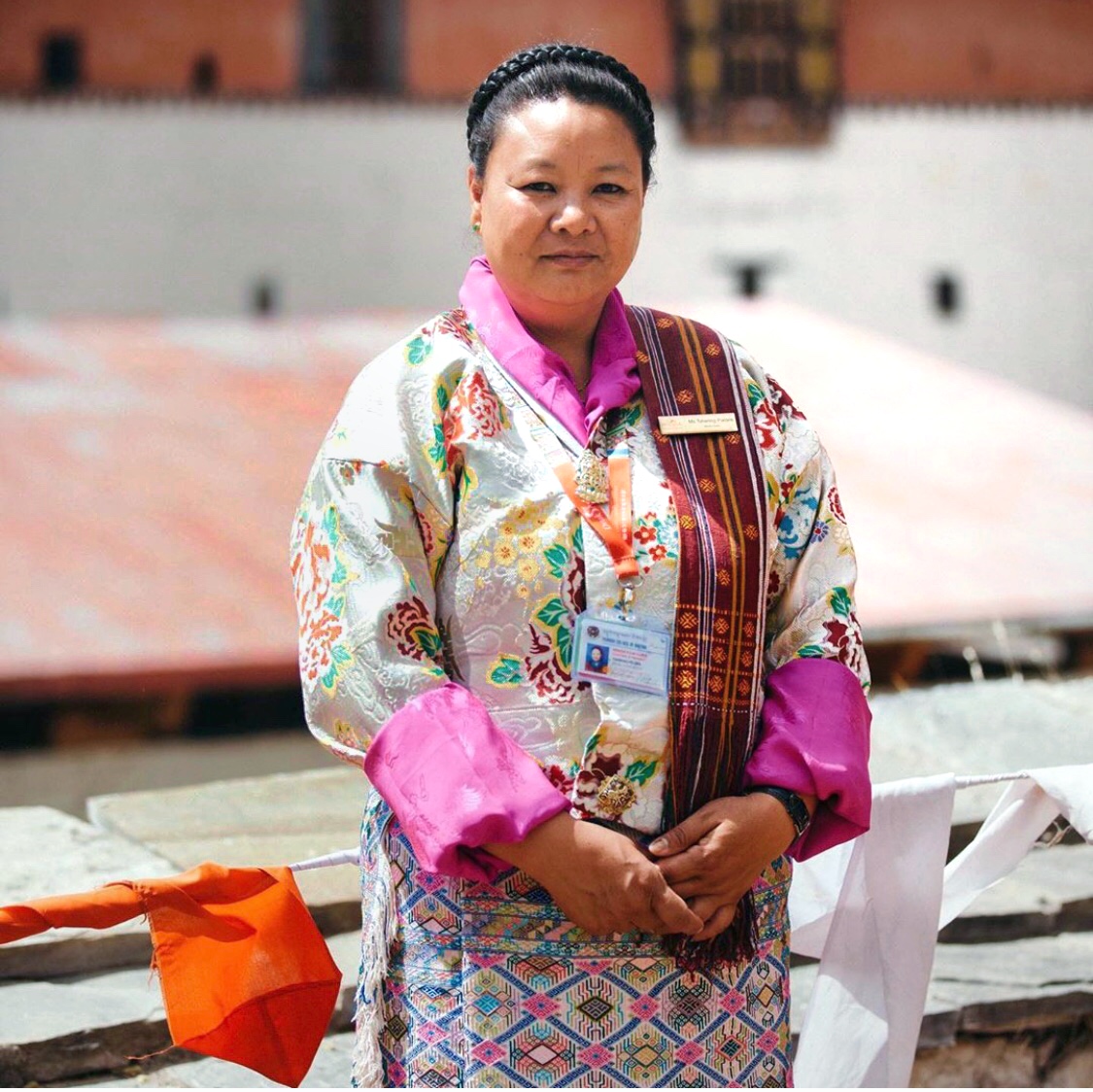
With home cooking, it’s based on feelings. You want the best for your friends and family; she cooks with a lot of love. The person eating it must feel loved and nourished, and we felt that when she cooks for us. On the last day we cooked together, she taught me how to make momo – a simple dumpling dish, my skillset wasn’t good. Yet it was so yummy, and just tasted different.
5. You’ve been to Bhutan 3 times. What food/cooking related adventures did you specifically pick up on each trip?
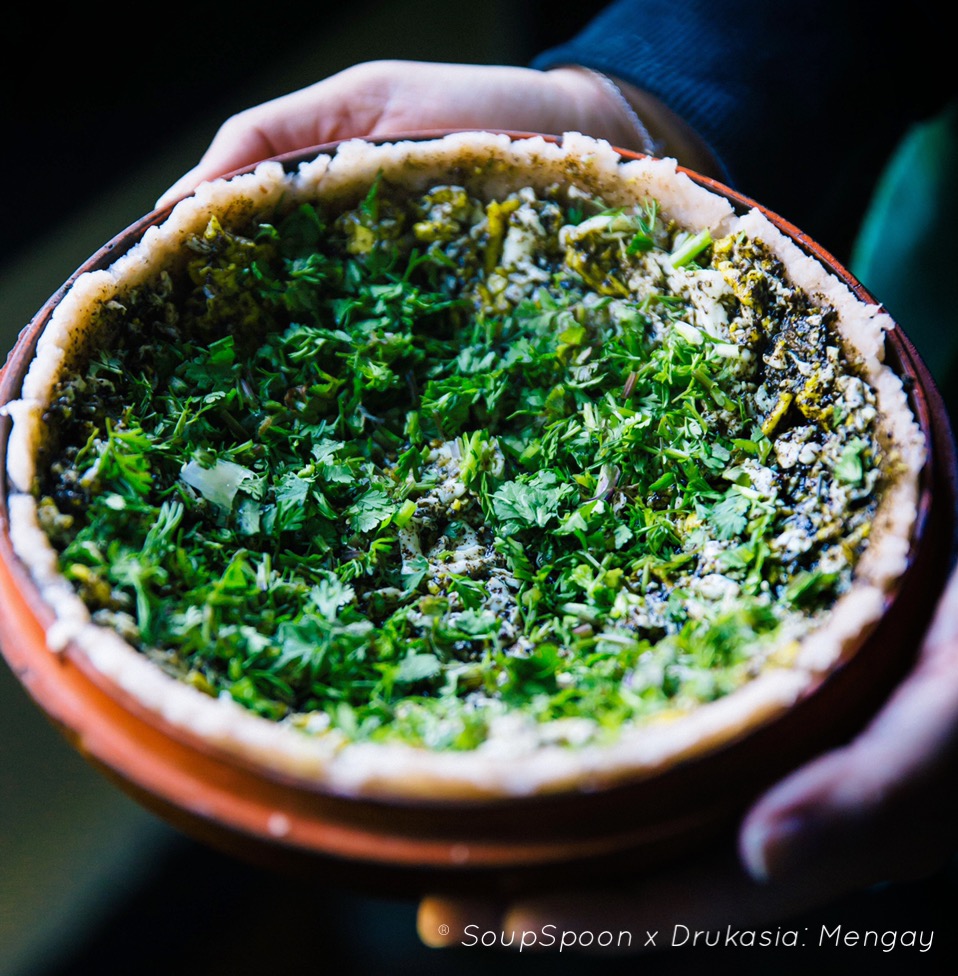
On trip one, we learnt how to cook chilli cheese, and jasha maroo (spicy chicken stew).
On trip two, we ate buckwheat pancakes, learnt how to make ara (local brewed alcohol), and we even taught locals how to cook Singapore’s chicken rice at a guest house! That was also the trip where we explored agricultural rich Bumthang – we picked berries, and visited a honey factory, and beer factory. This year, it was mangey (kneaded red rice mashed with butter, topped with ground black sesame, herbs and other seasonal ingredients), and momo (potato and cheese filled dumplings). Each trip, it was always something we’ve never done before, somehow experiencing a different side of Bhutan.
6. Rank your top 5 favourite Bhutanese dishes.
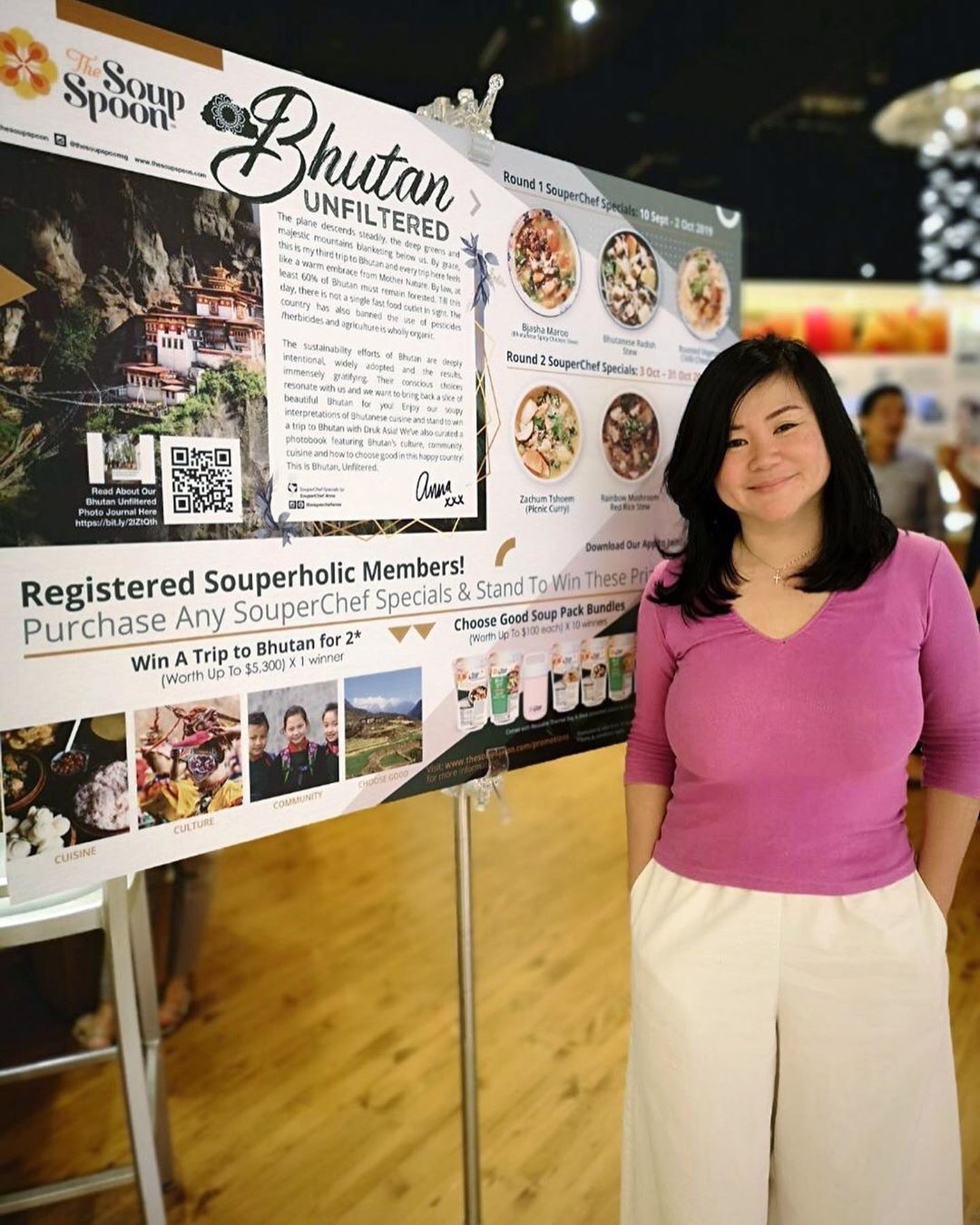
-
1. Momo
-
2. Mangey
-
3. Ema datshi (chilli cheese)
-
4. Batuk (a kind of flat flour noodle) topped with ezay
-
5. Lentils soup
7. Would you say Bhutanese food is easy to get used to?
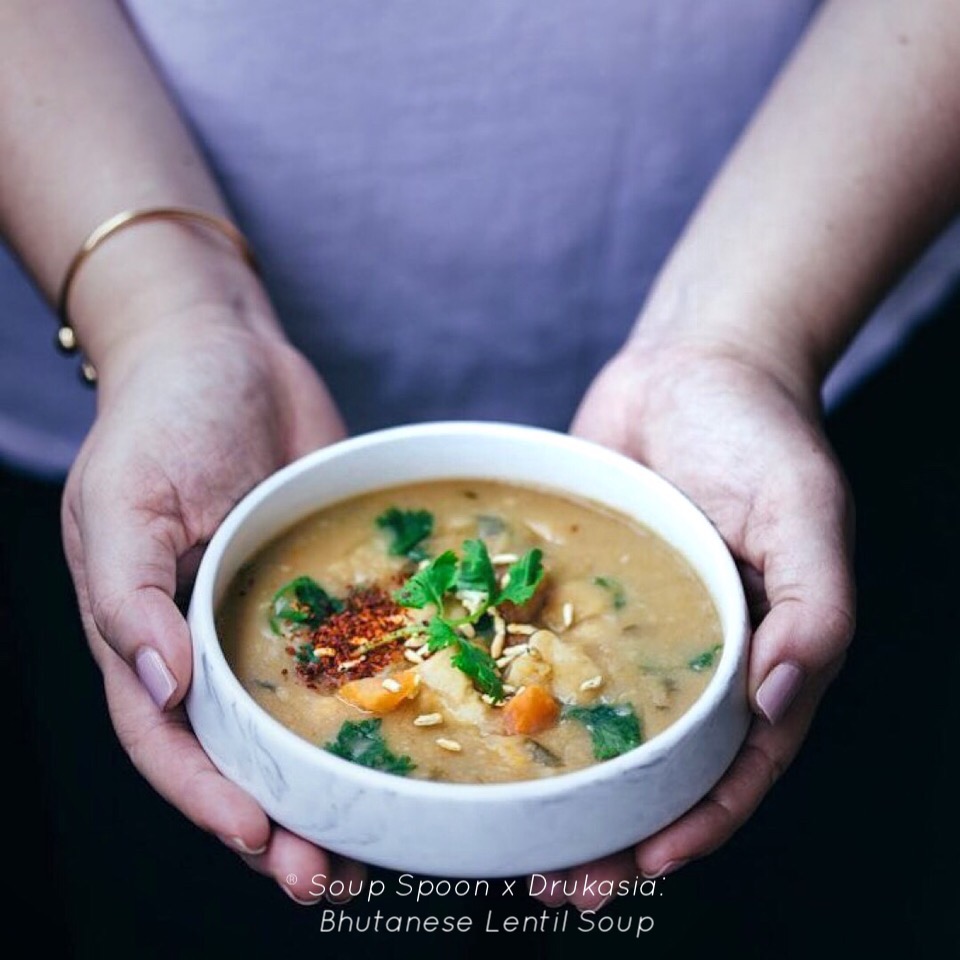
Yes! Bhutanese food has a lot of Indian and Chinese influences. On my first trip, I had heard about ema datshi and thought I wouldn’t get used to it, but I did. I actually even brought instant noodles just in case, but I didn’t eat any!
8. Of the Bhutan recipes you’ve posted on Soup Spoon’s blog, which would be the easiest or fail proof to present to friends coming over for dinner?
(Laughs) I think they’re generally quite fool proof, these are tried and tested recipes. If you’ve eaten the pancakes that day (at the Bhutan Unfiltered launch of soups), that’s a dish that’s easier to make. Another one is ezay – that’s the exact same recipe I use in my store, passed down by my Druk Asia guide, Ugyen.
9. When customers drink these 6 specially concocted soups, what is it about Bhutan that you want them to taste, sense, experience?
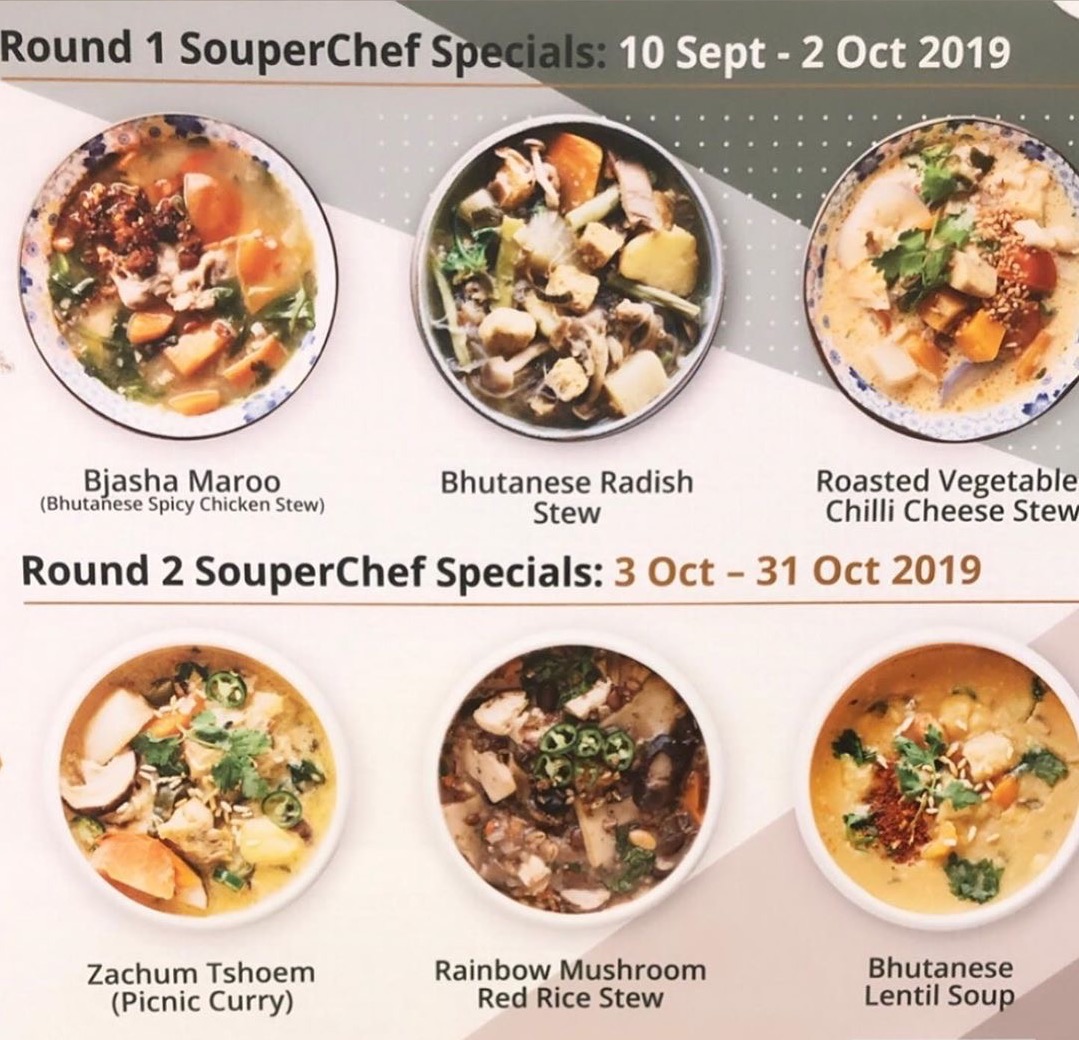
The campaign this time is named Bhutan unfiltered – we want people to see Bhutan as it is. In this country, what you see is what you get; this is how they live their life. Even in terms of what they’re trying to do in the country, going organic, how they educate their citizens, hospitality, it’s all very rustic, homely, nothing fancy – and that’s what we want to portray. Soups that are rustic and wholesome.
Conclusion About Taste Of Bhutan
Savour the flavors of Bhutan with our Bhutan travel packages. Plan your culinary adventure by knowing the best time to travel to Bhutan and budgeting with our Bhutan travel cost guide. For a luxurious culinary journey, explore our luxury travel in Bhutan offerings. If you're coming from Malaysia, our guide on travel to Bhutan from Malaysia will be useful. Druk Asia, the best Bhutan travel agency, is here to enhance your culinary experience in Bhutan.
